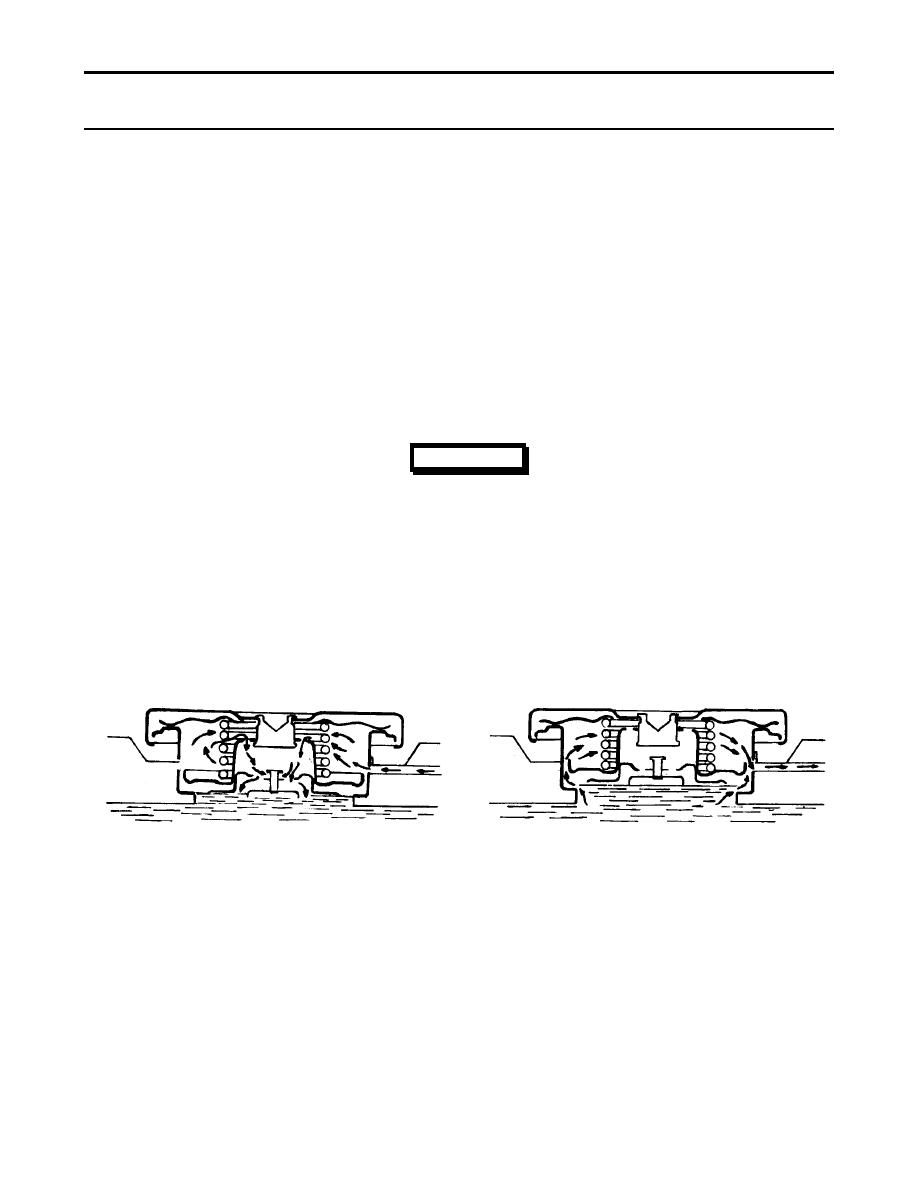
| Tweet |

Custom Search
|
|

|
||
 TM 55-1905-220-14-4
3-19.
EXPANSION TANK - MAINTENANCE INSTRUCTIONS.
a. In the expansion tank and keel cooling systems, the coolant is drawn by the raw water pump from the
expansion tank and keel cooler, and is forced through the engine oil cooler, cylinder block, cylinder heads,
exhaust manifolds and finally to the thermostat housings. A by-pass from the thermostat housings to the inlet.
side of the water pump permits circulation of coolant through the engine while the thermostats are closed.
b. In the keel cooling system, coolant flows through the keel cooling coils and then to the suction side of
the raw water pump for recirculation. The heat of the engine coolant is passed through the keel cooler coils and
out to the sea water.
c. The expansion tank has a pressure control cap with a normally closed valve. The cap with a number 7
stamped on its top, is designed to permit a pressure of approximately seven pounds in the system before the
valve opens. This pressure raises the boiling point of the cooling liquid and permits somewhat higher engine
operating temperatures without loss of any coolant from boiling. To prevent the collapse of hoses and other
parts which are not internally supported, a second valve in the pressure cap opens under vacuum when the
system cools.
WARNING
Always remove the expansion tank cap slowly and carefully to
avoid possible flash of hot cooling liquid.
d. To ensure against possible damage to the cooling system from either excessive pressure or vacuum,
check both valves periodically for proper opening and closing pressures. If the pressure valve does not open
between 6-1/4 and 7-1/2 psi (43.1 and 51.7 kpa) or vacuum valve does not open at 5 to 8 Hg (34.5 to 55.2 kpa)
replace cap.
3-570
|
||
 |
||